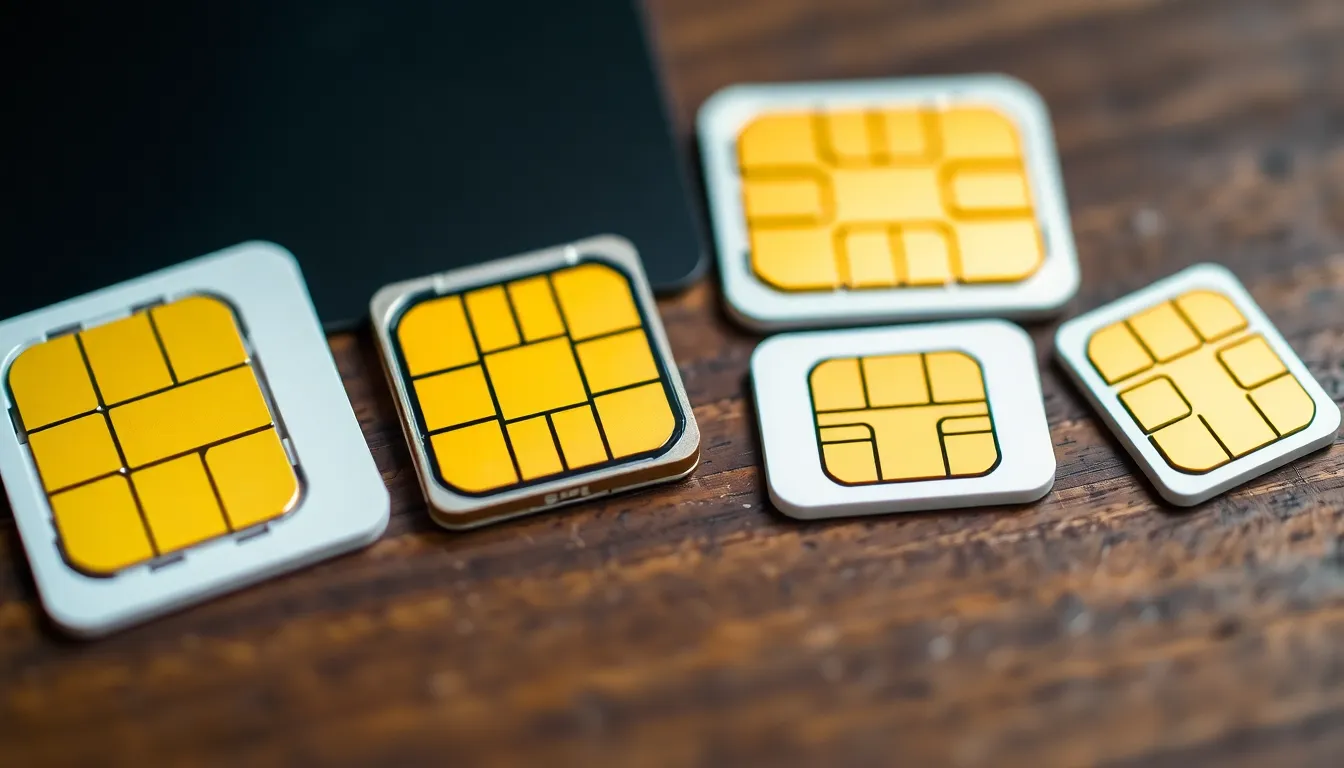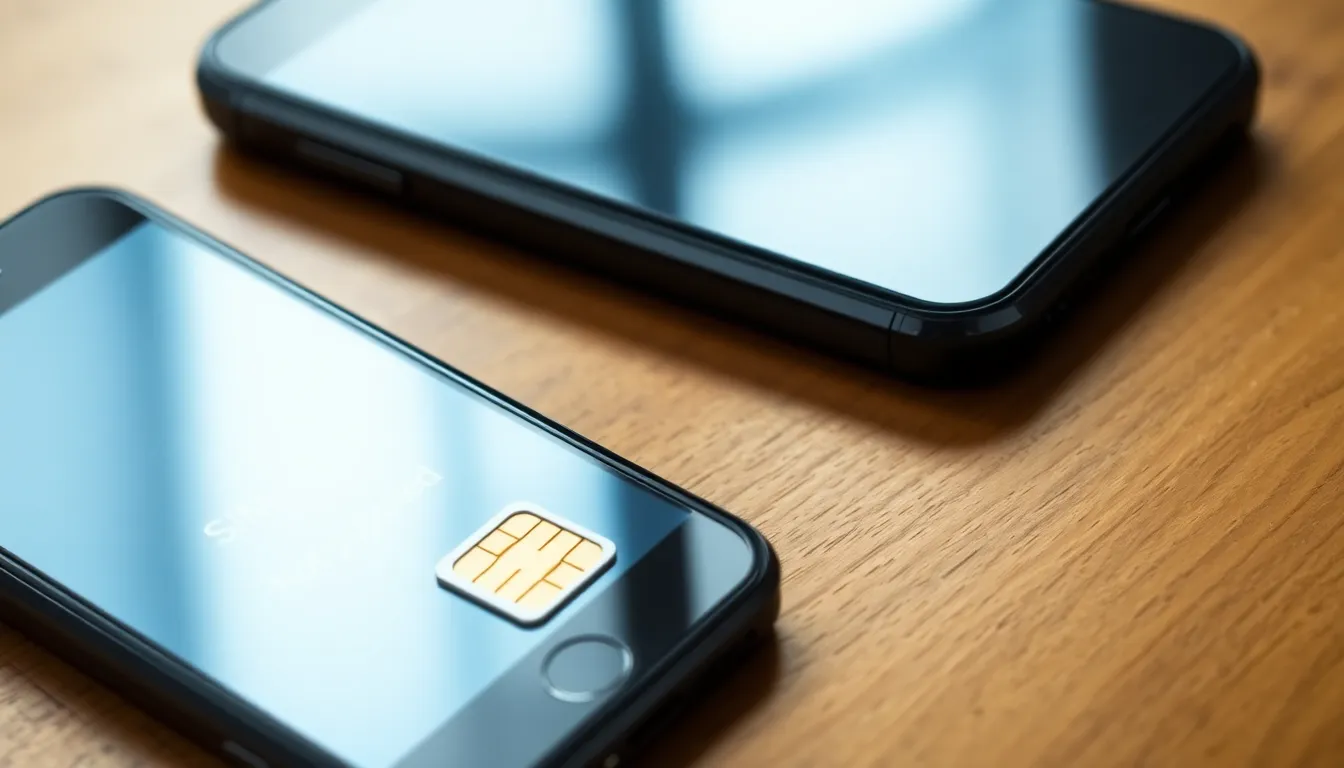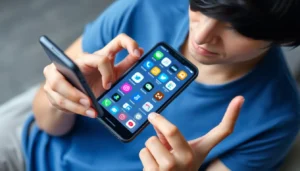Ever wondered what happens when you pop a SIM card into a locked iPhone? Spoiler alert: it’s not the magic trick you hoped for. While you might be dreaming of instant connectivity and a world of apps at your fingertips, the reality is a bit more complicated.
Table of Contents
ToggleOverview of Locked iPhones
Locked iPhones restrict access to only specific carriers. Such devices require carrier authorization for activation and use. Many iPhone users encounter this issue after purchasing or receiving a locked device. Connecting that iPhone to a different carrier’s network often proves challenging without unlocking.
Unlocking typically involves the original carrier. They must verify eligibility before providing an unlock code or service. Sometimes, third-party services offer unlocking, but results can vary. Locked iPhones may still connect to Wi-Fi and access certain features, but cellular connectivity stays limited.
Inserting a SIM card into a locked iPhone doesn’t bypass these restrictions. The iPhone recognizes the SIM card but won’t activate it without the proper unlock status. Users engage with some functions, including emergency calls and Wi-Fi access, even while locked. However, cellular service remains unavailable without the required carrier authorization.
Many users mistakenly believe that switching SIM cards resolves connectivity issues. That misconception leads to frustration when access remains unattainable. Compatibility issues might also arise if the SIM card belongs to a different network altogether. Newer models emphasize greater security, reinforcing the need for a carrier’s unlocking process.
Contacting the carrier provides users with necessary information about unlocking conditions. Understanding the limitations associated with locked devices enhances the user experience. They can navigate connectivity challenges with clarity by recognizing these aspects.
Understanding SIM Cards

SIM cards play a crucial role in mobile connectivity. They store information necessary for authenticating a device on a cellular network. Each SIM card contains unique data, including the International Mobile Subscriber Identity (IMSI), which identifies the user and allows access to network services. When a user inserts a SIM card into a compatible device, they enable calling, texting, and data services provided by their carrier.
Functionality of a SIM Card
A SIM card connects a mobile device to a carrier’s network. It facilitates communication by linking the device’s IMEI number with the user’s account. Users can access voice and data plans through the information stored on the card. Security features also protect personal data by encrypting communication between the device and the network. Inserting a SIM card into a locked iPhone often results in limited functionality, as the phone needs activation from the designated carrier for full access.
Types of SIM Cards
Different types of SIM cards exist, and they cater to various devices and network requirements. Standard SIM cards are gradually phasing out in favor of mini and micro formats, which fit into newer devices. Moreover, nano SIM cards are the most compact and widely used in modern smartphones. eSIM technology offers even more flexibility, allowing digital activation without a physical card. Users should ensure compatibility with their device’s requirements when choosing a SIM card.
What Happens When You Insert a SIM Card in a Locked iPhone
Inserting a SIM card into a locked iPhone leads to specific outcomes based on the phone’s restrictions and the SIM’s compatibility.
Activation Lock vs. SIM Lock
Activation lock secures the device to an Apple ID, preventing unauthorized access. SIM lock, however, restricts the device to a specific carrier’s network, meaning only that carrier’s SIM can enable full functionality. Both locks serve as security measures but target different aspects of device use. Users often confuse these locks, thinking inserting any SIM might grant access. Activation lock requires the Apple ID credentials for deactivation, while SIM lock depends on carrier authorization for switching networks.
Possible Outcomes
When a SIM card is inserted into a locked iPhone, limited functionality occurs. Users might see a message indicating that the SIM is not supported, as the phone cannot authenticate the card without the correct carrier settings. Access to cellular services remains restricted unless the phone is unlocked by the original carrier. Some features, like Wi-Fi and basic apps, remain available but cellular connectivity is largely ineffective. Frustration often results, as users mistakenly expect seamless integration. Understanding the differences and limitations helps clarify what inserting a SIM card into a locked iPhone truly entails.
Bypass Methods
Bypassing restrictions on a locked iPhone isn’t straightforward and involves various factors. Understanding the methods available can clarify options.
Legal Implications
Attempting to unlock a locked iPhone may breach user agreements. Violating terms of service can result in termination of service and potential legal action from the carrier. Laws vary by region, influencing the permissibility of using unlocking services. Unauthorized unlocking could lead to penalties or fines, especially in places where it’s prohibited. Many users unknowingly put themselves at risk when seeking unauthorized methods. Consulting with the carrier for legitimate unlocking processes helps avoid legal issues.
Risks and Consequences
Attempting to bypass locks carries inherent risks that can severely impact devices. First, users might accidentally damage software, rendering the iPhone inoperable. Furthermore, improper unlocking methods may introduce security vulnerabilities or expose personal data. Warranty voiding often occurs when unauthorized tools or services are used for unlocking. Additionally, using unverified solutions can result in permanent loss of data or device functionality. Choosing reliable, sanctioned methods is crucial to protect the device and user information.
Inserting a SIM card into a locked iPhone can lead to confusion and frustration. Users often expect immediate connectivity but quickly discover that the device’s restrictions prevent access to cellular services without the proper authorization from the original carrier. While some features remain accessible, the lack of full functionality highlights the importance of understanding the differences between activation locks and SIM locks.
For those facing challenges, consulting with the carrier for legitimate unlocking options is crucial. This approach not only ensures compliance with legal standards but also protects the device and personal data. Ultimately, awareness of these limitations can help users navigate their options more effectively.







